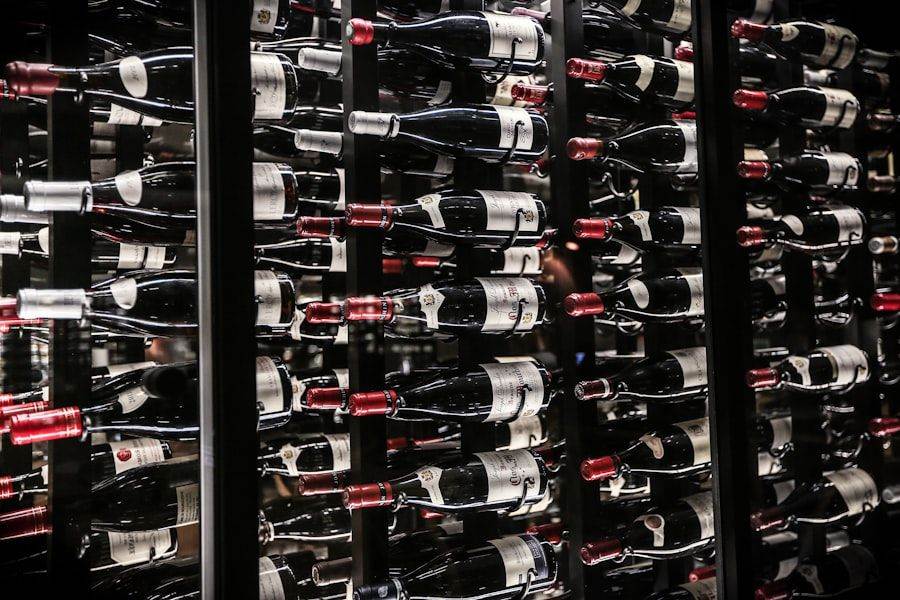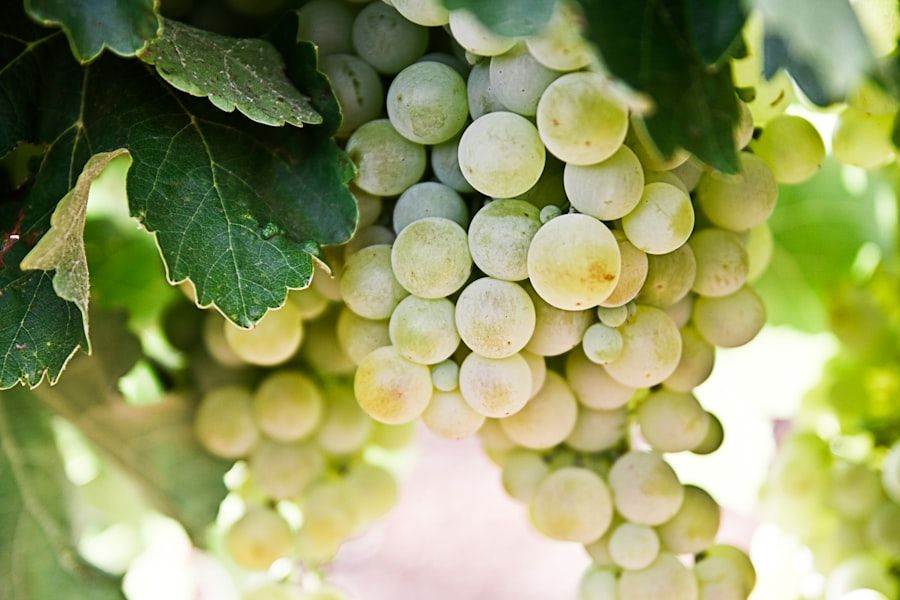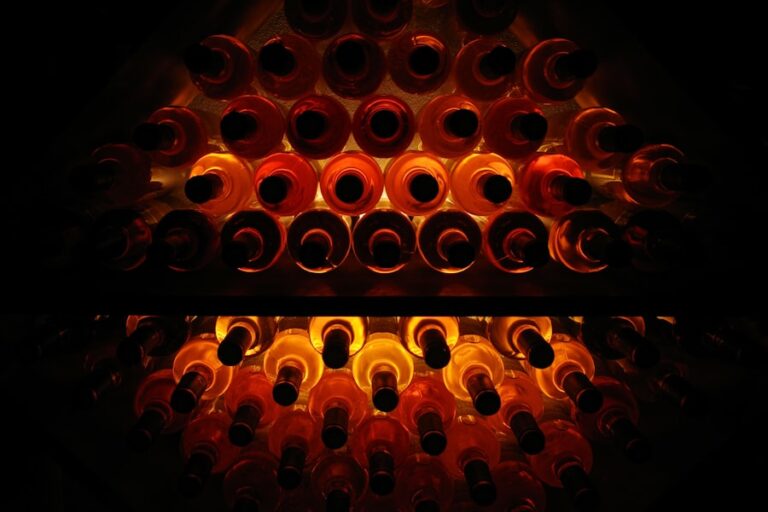Protecting Your Pinot: Understanding California Temperature Fluctuations
Temperature fluctuations can have a profound impact on the quality and character of wine. Wine is a delicate product, and its development is intricately tied to the conditions under which it is stored and aged. When wine is subjected to significant temperature changes, it can lead to a range of undesirable effects.
For instance, excessive heat can accelerate the aging process, causing the wine to lose its intended flavor profile and complexity. Conversely, if wine is stored in conditions that are too cold, it may not develop fully, resulting in a flat or muted taste. Moreover, temperature fluctuations can also affect the physical properties of wine.
When exposed to heat, the wine can expand, potentially pushing the cork out of the bottle and allowing air to seep in. This oxidation can spoil the wine, leading to off-flavors and aromas that detract from the overall experience. On the other hand, cold temperatures can cause the wine to contract, which may lead to sediment formation and cloudiness.
Therefore, maintaining a consistent temperature is crucial for preserving the integrity of wine and ensuring that it reaches its full potential.
Key Takeaways
- Temperature fluctuations can impact the quality and taste of wine, making it crucial for winemakers to monitor and mitigate these changes.
- California’s diverse climate and microclimates play a significant role in the development of grapes and the overall wine production process.
- Temperature fluctuations can affect grape development, leading to changes in sugar levels, acidity, and flavor profiles in the resulting wine.
- Techniques such as wind machines, sprinkler systems, and row orientation can help protect vineyards from temperature fluctuations and minimize potential damage to the grapes.
- Technology plays a vital role in monitoring and mitigating temperature fluctuations, with tools like weather stations and temperature sensors helping winemakers make informed decisions.

Understanding California’s Climate and Microclimates
California is renowned for its diverse climate and unique microclimates, which play a significant role in viticulture. The state’s geography, ranging from coastal regions to mountainous areas, creates a variety of climatic conditions that can influence grape growing. Coastal areas benefit from cool ocean breezes that moderate temperatures, while inland regions may experience hotter days and cooler nights.
This variation allows for a wide range of grape varieties to thrive, each adapting to its specific environment. Microclimates within California’s wine regions can be particularly influential. For example, vineyards located in valleys may experience different weather patterns than those situated on hillsides.
These microclimates can affect everything from grape ripening to disease susceptibility. Understanding these nuances is essential for winemakers as they select grape varieties and determine optimal harvesting times. The interplay between climate and microclimate ultimately shapes the character of the wines produced in California, making it a fascinating region for both producers and consumers alike.
Effects of Temperature Fluctuations on Grape Development
Temperature fluctuations during the growing season can significantly impact grape development and, consequently, the quality of the wine produced. Grapes are sensitive to temperature changes, which can affect their ripening process. For instance, warmer temperatures can accelerate ripening, leading to higher sugar levels and lower acidity.
While this may seem beneficial for some varietals, it can result in imbalanced wines that lack complexity and freshness. Additionally, temperature fluctuations can influence phenolic development in grapes, which is crucial for color, flavor, and tannin structure in red wines. If temperatures are inconsistent during critical growth phases, such as flowering or veraison (the onset of ripening), it can lead to uneven ripening and variability in grape quality.
This inconsistency poses challenges for winemakers who strive for uniformity in their products. Ultimately, understanding how temperature fluctuations affect grape development is vital for producing high-quality wines that reflect the terroir of their origin.

Techniques for Protecting Vineyards from Temperature Fluctuations
To mitigate the effects of temperature fluctuations on vineyards, winemakers employ various techniques aimed at protecting their crops. One common method is the use of cover crops between vineyard rows. These plants can help regulate soil temperature and retain moisture, creating a more stable environment for grapevines.
Additionally, cover crops can improve soil health by enhancing biodiversity and preventing erosion. Another technique involves strategic vineyard placement and design. By planting vines on slopes or in areas with natural windbreaks, growers can shield their crops from extreme temperature changes.
Furthermore, some vineyards utilize shade cloths or other protective coverings during particularly hot spells to shield grapes from excessive sun exposure. These practices not only help maintain consistent temperatures but also contribute to the overall health of the vineyard ecosystem.
The Role of Technology in Monitoring and Mitigating Temperature Fluctuations
In today’s modern winemaking landscape, technology plays an increasingly vital role in monitoring and mitigating temperature fluctuations. Advanced weather stations equipped with sensors can provide real-time data on temperature, humidity, and other environmental factors affecting vineyards. This information allows winemakers to make informed decisions regarding irrigation, pest control, and harvesting times.
Moreover, temperature-controlled storage solutions have become essential for preserving wine quality post-harvest. Wine fridges and cooling systems are designed to maintain optimal storage conditions, ensuring that temperature fluctuations do not compromise the integrity of the wine. These technological advancements not only enhance the winemaking process but also provide consumers with greater assurance regarding the quality of the wines they purchase.
Best Practices for Storing and Transporting Wine in Varied Temperatures

When it comes to storing and transporting wine, best practices are essential for maintaining its quality amidst varied temperatures. For home collectors or enthusiasts, investing in a dedicated wine fridge is one of the most effective ways to ensure that bottles are kept at a consistent temperature. These specialized units are designed to provide optimal conditions for aging wine, including stable humidity levels and protection from light exposure.
During transportation, it is crucial to consider temperature control as well. Whether shipping wine across the country or simply bringing a bottle to a dinner party, maintaining a stable environment is key. Using insulated bags or coolers can help protect wine from extreme temperatures during transit.
Additionally, avoiding prolonged exposure to direct sunlight is vital; even short periods of heat exposure can negatively impact the wine’s flavor profile.
The Importance of Proper Cellaring to Protect Your Pinot
Proper cellaring is particularly important for protecting delicate varietals like Pinot Noir. This grape is known for its sensitivity to temperature changes and requires specific conditions to thrive over time. A consistent cellar temperature between 55°F and 65°F is ideal for aging Pinot Noir, allowing it to develop its complex flavors without risk of spoilage.
In addition to temperature control, humidity levels should also be monitored in a wine cellar. Maintaining humidity between 50% and 70% helps prevent corks from drying out or becoming too moist, both of which can compromise the seal and allow air into the bottle. Proper cellaring not only preserves the integrity of Pinot Noir but also enhances its aging potential, allowing it to evolve beautifully over time.
How Winemakers Adapt to California’s Temperature Fluctuations
Winemakers in California have developed various strategies to adapt to the state’s temperature fluctuations while ensuring high-quality production. One approach involves selecting grape varieties that are better suited to withstand heat stress or cooler conditions. For example, some winemakers are experimenting with lesser-known varietals that thrive in warmer climates as traditional favorites may struggle under extreme conditions.
Additionally, many winemakers are embracing sustainable practices that promote resilience against climate variability. This includes implementing water conservation techniques such as drip irrigation and utilizing organic farming methods that enhance soil health. By fostering a more sustainable vineyard ecosystem, winemakers can better adapt to changing temperatures while producing exceptional wines that reflect California’s unique terroir.
In conclusion, understanding the impact of temperature fluctuations on wine production is essential for both winemakers and consumers alike. From grape development to proper storage techniques, every aspect plays a crucial role in preserving the quality of this beloved beverage. As California’s climate continues to evolve, innovative practices and technologies will be key in ensuring that winemakers can adapt while delivering exceptional wines for generations to come.
FAQs
What are the temperature fluctuations in California?
California experiences temperature fluctuations due to its diverse climate and geography. The state has both coastal and inland regions, as well as mountainous areas, leading to varying temperature patterns.
How do temperature fluctuations affect wine production in California?
Temperature fluctuations can impact the quality of wine grapes. Extreme heat or cold can disrupt the ripening process and affect the flavor and aroma of the grapes, ultimately influencing the quality of the wine produced.
What measures can be taken to protect wine grapes from temperature fluctuations?
Winemakers can implement various strategies to protect wine grapes from temperature fluctuations, such as using shade cloth to shield the vines from excessive heat, employing irrigation techniques to cool the vineyard, and selecting grape varieties that are more resilient to temperature changes.
What role does understanding temperature fluctuations play in wine production?
Understanding temperature fluctuations is crucial for wine producers as it allows them to make informed decisions about vineyard management, grape selection, and winemaking techniques. This knowledge helps ensure the production of high-quality wines despite varying climate conditions.







